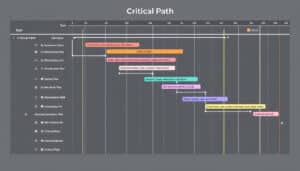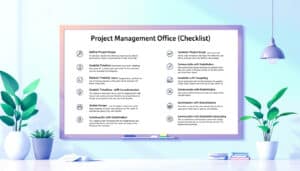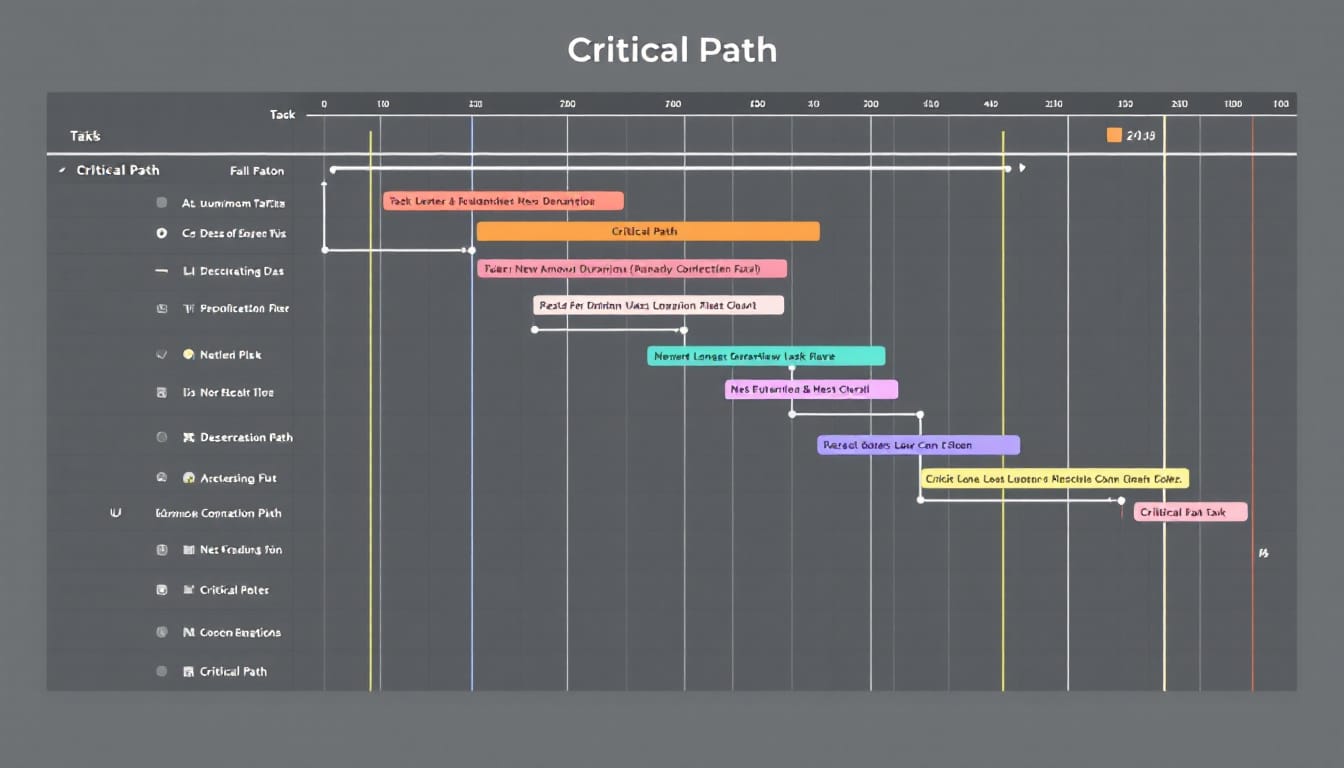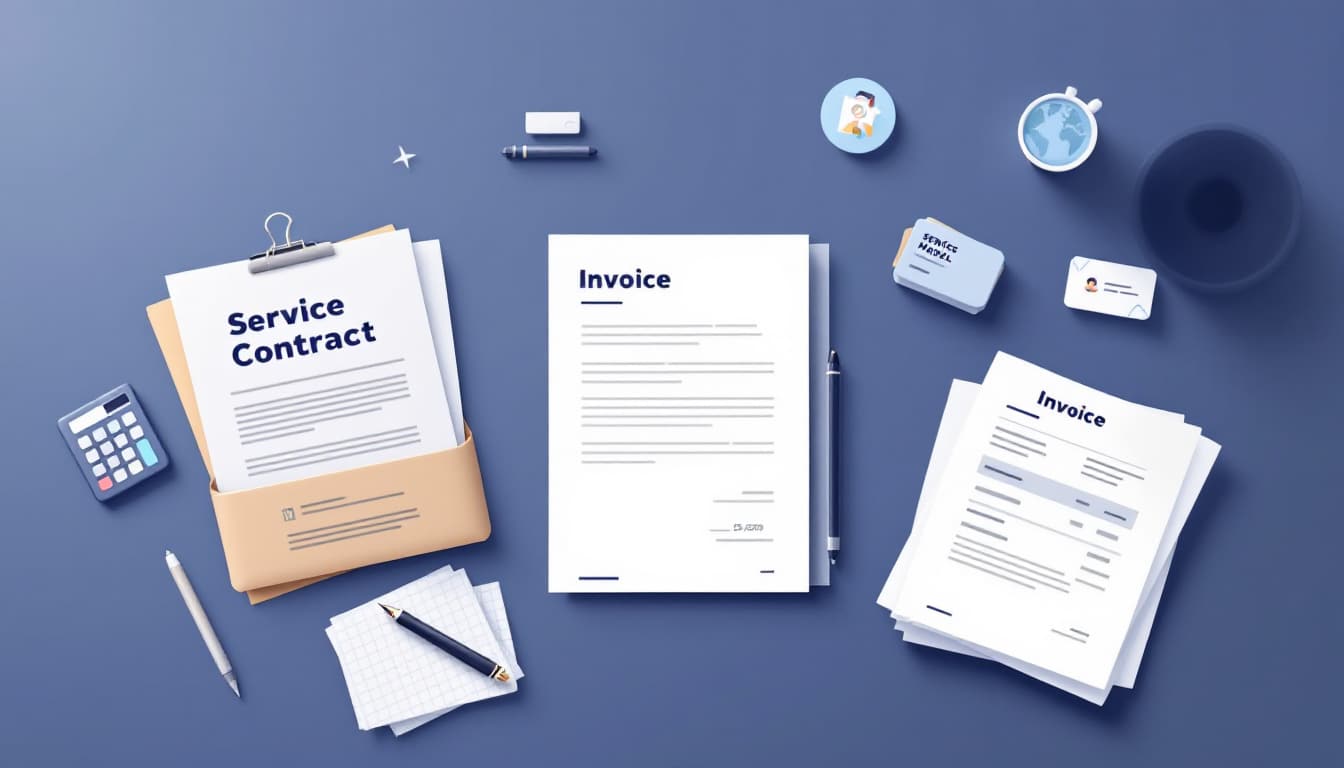There is always a tension between the daily management of the business and its evolution.
As a project manager, leading change can often seem to hinder my colleagues’ ability to keep the business running.
I am regularly told that operations management takes precedence: maintaining activities is more important than any new initiative.
But things are changing. Antonio-Nieto Rodrigues explains in the Harvard Business Review that the project economy is pushing more and more organizations to adopt a project-oriented approach. What was once considered an “extra” is now essential for creating competitive advantage, developing new offerings, and meeting consumer expectations.
With advancements in AI-enabled technologies and robotic process automation, structuring work into projects allows for repeatable and efficient delivery. Projects not only support the functioning of organizations but also their evolution.
I welcome this change enthusiastically. However, there is an obstacle: many managers and leaders heading projects have little to no experience with project management tools and techniques.
Faced with a personal portfolio of changes to be made or initiatives to launch, they cannot simply focus on a single project. They must juggle multiple projects and adapt their approach so that all tasks remain in balance.
🔥 Nous recommandons Ideamap
Ideamap est l’outil idéal pour un brainstorming ou un projet collaboratif. Grâce son interface facile et à ses fonctions IA, Ideamap booste votre créativité tout en favorisant une meilleure organisation de vos idées pour atteindre vos objectifs.
Get your copy
Managing Multiple Projects: How Project Managers Can Balance Priorities, Manage Expectations, and Increase Productivity is a book that offers a comprehensive framework for juggling your workload while leaving the office on time.
Work expectations have changed
Many of our colleagues had to adapt their way of working early in the pandemic. With team members furloughed, leaders had to take on more and different tasks, making juggling the norm as everyone pitched in to meet goals.
As a result, our perception of work has fundamentally evolved. Hybrid work could boost productivity by 4.6%, but could it be even higher if more people had access to the techniques and processes that project managers take for granted?
It can be stressful to be an accidental project manager (someone who finds themselves managing projects without having planned this career) or an unconscious project manager (someone who does not yet recognize that they are managing projects).
The biggest challenge I have observed in the people I mentor and work with is adapting work methods to keep up with multiple tasks.
A gigantic to-do list is not enough to stay organized and focused on priorities, but switching from one project schedule to another also seems inefficient.
The impact on project professionals
Project professionals are not immune to this stress either. My research shows that 59% of project managers lead between 2 and 5 projects, and 26% lead more than 6 simultaneously.
The main challenge for these people is concern about the quality of work. More than 60% of project professionals fear they are not completing their work to the best of their ability due to workload.
Given that we, project professionals, tend to possess the skills to organize, plan, monitor, and engage others, I imagine the stress of our colleagues who cannot rely on established tools and techniques.
Supporting colleagues in project delivery
Whether you lead a team of project managers each juggling multiple projects, manage a PMO, or are the only official project leader in your organization, consider how you can share what you know with your colleagues responsible for delivery in their respective areas.
Opening your template library to the entire organization, organizing “lunch and learn” sessions on productivity tips, or offering training on your software tools can all help improve project outcomes.
Empowering individuals in all roles to use the tools and techniques they need, regardless of workload or job title, will help organizations deliver better overall value.
What’s in your personal portfolio?
The most important thing when trying to keep many projects going is to focus on priorities. In the absence of information on priority setting from above, make your own judgment based on what you know to be important.
From my experience, we are expected to keep every initiative moving forward and report on some progress, even for low-priority projects. But it is much easier to do this if you can identify the order of priority of the work that makes up your personal portfolio.
Portfolio management techniques – the ability to balance risk and reward while delivering the right projects at the right time – work at an individual level as well as across an organization.
If you are managing multiple projects, whether by choice or by accident, take stock of what you are doing, how individual projects interrelate, and where you can find efficiency gains by combining schedules, risk management activities, stakeholder meetings, and much more.
Working on many projects simultaneously may seem stressful, but it is also a great way to see more of the organization and learn how it works as a system through interconnected informal power structures and knowledge-sharing opportunities. This helps clarify what is truly important and guide decision-making.
The way organizations rely on project delivery is evolving, and we must evolve with them. This means sharing our knowledge, streamlining processes, and making the management of a modern workload as easy as possible through smarter work methods.
Project management practices must adapt to the realities of change delivery. How does your organization position itself?

Managing multiple projects simultaneously may seem like a daunting task, but with the right strategies, it is possible to maintain high productivity while ensuring the quality of each initiative. In this article, we will explore effective methods for balancing your priorities, managing expectations, and increasing your productivity when faced with a heavy workload.
How to effectively prioritize your multiple projects?
Prioritization is essential when managing multiple projects. Start by assessing the importance and urgency of each task. Use tools like the Eisenhower matrix to categorize your projects based on their impact and deadline. This method allows you to focus your efforts on projects that provide the most value to your organization.
Furthermore, set clear goals for each project. Ensure that each goal is specific, measurable, achievable, relevant, and time-bound (SMART). This gives you a clear roadmap and facilitates the management of various stages of each project.
Another crucial aspect is to delegate effectively. Identify tasks that can be assigned to other team members. Delegation not only lightens your workload but also allows team members to develop their skills.
What time management techniques to adopt?
Effective time management is fundamental for managing multiple projects. Start by planning your day using techniques such as the Pomodoro method or time blocking. These methods help you stay focused and avoid distractions.
Using project management tools like The 5 Phases of Project Management allows you to track the progress of each project in a structured manner. These tools provide an overview of your tasks, making it easier to allocate your time and prioritize activities.
It is also important to schedule regular breaks to avoid burnout. Taking time to rest allows you to recharge and improve your overall effectiveness.
How to manage stakeholder expectations?
When managing multiple projects, it is crucial to manage expectations of stakeholders proactively. Communicate regularly with your clients, your team, and your superiors to keep them informed about the progress of each project.
Use clear and concise progress reports to show the advancements made and the challenges faced. Honesty and transparency in communication build trust and facilitate issue resolution before they become critical.
Establish effective communication channels, such as weekly meetings or email updates, to ensure a smooth flow of information. This helps keep everyone aligned on the objectives and deadlines of each project.
What tools can help you manage multiple projects?
Using the right tools can greatly simplify managing multiple projects. Platforms like Project Feasibility Report offers advanced features for planning, tracking, and analyzing your projects. These tools centralize all information, making management more efficient and less fragmented.
Gantt charts, available in tools like Practical Guide to Mastering Gantt Charts in Project Management, are particularly useful for visualizing deadlines and dependencies between tasks. They provide an overview that makes priority management and team coordination easier.
Finally, online collaboration tools like Slack or Trello can improve communication and coordination within your team, allowing you to effectively manage multiple projects at the same time.
How to maintain quality while managing multiple projects?
Maintaining the quality of your work when managing multiple projects requires special attention. Set clear quality standards from the outset and ensure that all team members understand and respect them. Implementing regular review and quality control processes allows you to detect and correct errors before they become problematic.
Continuous training is also essential. Invest in developing your team’s skills so they can manage the challenges associated with handling multiple projects. Training sessions or workshops can help strengthen skills in time management, organization, and communication.
Also, use quality tracking tools, such as checklists or performance dashboards, to monitor progress and identify areas needing improvement. This commitment to quality ensures that each project is delivered with a high level of satisfaction for all stakeholders.
What are the signs of burnout and how to avoid them?
Burnout is a major risk when managing multiple projects at the same time. Signs include constant fatigue, decreased productivity, frequent errors, and emotional disengagement. To avoid this, it is important to recognize early warning signs and take preventive measures.
Set clear boundaries between work and personal life. Taking regular breaks and ensuring you have adequate recovery time is crucial for maintaining a good balance. Also, don’t hesitate to delegate tasks or ask for help when the workload becomes too heavy.
Stress management is also essential. Incorporate relaxation techniques such as meditation or yoga into your daily routine to reduce stress and improve your overall well-being. By taking care of your mental and physical health, you can avoid burnout and maintain optimal performance even under pressure.
How to leverage technology to manage multiple projects?
Technology plays a key role in effectively managing multiple projects. AI-based tools and robotic process automation (RPA) enable structuring work into repeatable and efficient projects. These technologies facilitate planning, resource management, and progress tracking, freeing up time for you to focus on strategic tasks.
Integrate project management software that offers advanced features such as predictive analytics and risk management. This allows you to anticipate potential issues and make informed decisions quickly. Real-time collaboration technologies, such as cloud platforms, ensure that all stakeholders have access to the most up-to-date information, improving coordination and communication.
Finally, using personalized dashboards can provide a clear overview of the status of each project. These dashboards allow you to track key performance indicators (KPIs) and adjust strategies in real-time to ensure that all projects move forward smoothly and efficiently.
What are the benefits of managing multiple projects simultaneously?
Managing multiple projects simultaneously offers many benefits, both for professionals and organizations. One of the main advantages is the increased visibility into the various operations of the business. By working on multiple projects, you gain a better understanding of how different initiatives interact and contribute to the organization’s overall goals.
Moreover, managing multiple projects can stimulate creativity and innovation. Diversifying your efforts exposes you to different ideas and approaches, fostering creative problem-solving. This diversity can also lead to cross-functional collaboration opportunities, strengthening team cohesion and efficiency.
Finally, the ability to manage multiple projects enhances your skills in organization, time management, and leadership. These skills are valuable for your professional development and can open the door to more advanced career opportunities.
How to adapt your personal organization to manage multiple projects?
An effective personal organization is crucial for managing multiple projects without stress. Start by adopting a task management method that suits you, whether it’s task lists, Kanban boards, or more sophisticated project management systems. The important thing is to find a system that helps you track your priorities and stay organized.
Establish daily and weekly routines for managing your projects. For instance, start each day with a review of priority tasks and schedule dedicated time blocks for each project. This structure helps you stay focused and avoid spreading your efforts too thin.
Use time management tools like digital calendars or task management apps to plan and track your activities. These tools offer reminders and notifications that help you meet deadlines and stay on track.
Finally, take the time to regularly review your personal organization. Identify what is working and what can be improved, and adjust your method accordingly. A flexible and adaptable organization will allow you to better manage fluctuations and unforeseen events in your projects.
How does collaboration improve the management of multiple projects?
Collaboration plays an essential role in effectively managing multiple projects. Working in a team allows for sharing responsibilities, combining skills, and benefiting from different perspectives. Good collaboration promotes better task distribution and fluid communication, thereby reducing the risks of duplication and errors.
Encourage a knowledge-sharing culture within your team. Organize regular meetings to discuss progress, challenges, and potential solutions. Use online collaboration tools like Understanding the Business Case Concept in Project Management to centralize information and facilitate teamwork.
Collaboration also allows for quickly identifying issues and finding innovative solutions. By working together, you can leverage each team member’s strengths and improve the quality of the final outcomes.
Furthermore, effective collaboration enhances team motivation and engagement. When everyone feels supported and valued, it creates a positive work environment that fosters project success.
What are common challenges and how to overcome them?
Managing multiple projects at the same time comes with many challenges, but with the right strategies, they can be overcome. One of the most common challenges is information overload. When working on several initiatives, it’s easy to feel overwhelmed by the amount of data and tasks to manage. To address this, use information management tools that allow you to centralize and organize your data effectively.
Another challenge is lack of time. Effective time management is crucial for balancing the demands of different projects. Learn to say no when necessary and delegate tasks to avoid overloading your schedule.
Team conflicts can also arise when multiple projects are underway. To avoid them, ensure open and transparent communication within the team. Clarify everyone’s roles and responsibilities and resolve conflicts quickly by promoting a collaborative approach.
Finally, maintaining motivation despite intense workloads can be challenging. Set realistic goals and celebrate small victories to keep your team engaged and motivated. Also, encourage a positive work environment where everyone feels valued and supported.
How to evaluate and adjust your project management methods?
Regularly evaluating your project management methods is essential for ensuring continuous improvement. Start by analyzing the results of each project in terms of meeting deadlines, quality, and stakeholder satisfaction. Identify what worked well and what could be improved.
Use feedback to adjust your processes and strategies. Organize debriefing meetings with your team to discuss lessons learned and best practices to adopt. This allows you to leverage successes and correct mistakes for future projects.
Adapt your tools and techniques based on the specific needs of each project. For example, you may find that certain time management or communication methods are more effective for some types of projects than others. Be flexible and open to change to optimize your project management.
Finally, stay informed of the latest trends and innovations in project management. Participating in training, reading specialized books, or joining professional communities can help you discover new approaches and continuously improve your skills.
How to maintain work-life balance?
Maintaining a work-life balance is crucial when managing multiple projects. An imbalance can lead to burnout and decreased productivity in the long term. To avoid this, it’s important to set clear boundaries between your work and personal life.
Plan downtime and personal activities into your schedule. This allows you to recharge and maintain good mental health. Also, make sure to take regular breaks during the workday to prevent fatigue and burnout.
Learn to delegate and say no when necessary. You don’t have to do everything alone, and delegating tasks can lighten your workload and allow you to focus on what’s truly important.
Finally, practice stress management by incorporating relaxation techniques such as meditation, yoga, or deep breathing into your daily routine. These practices can help you stay calm and focused, even under pressure.
What benefits can be gained from managing multiple projects?
Managing multiple projects at the same time offers many benefits, both professionally and personally. First, it develops your skills in time management and organization, which are valuable assets in any work environment.
Moreover, managing multiple projects allows you to increase your flexibility and adaptability. You learn to navigate complex environments and find creative solutions to emerging challenges.
On a personal level, this experience can enhance your self-confidence and job satisfaction. Successfully seeing multiple projects come to fruition gives a sense of accomplishment and motivation to tackle new challenges.
Finally, managing multiple projects fosters the development of a broader professional network. You collaborate with different teams and stakeholders, which can open career opportunities and enrich your professional experience.
Managing multiple projects at the same time is a challenge, but with the right strategies and appropriate tools, it is possible to maintain high productivity while ensuring the quality of each initiative. Prioritize effectively, manage your time optimally, and communicate proactively to succeed in this endeavor. By adopting a structured approach and remaining flexible, you can turn this complexity into an opportunity for growth and success.














